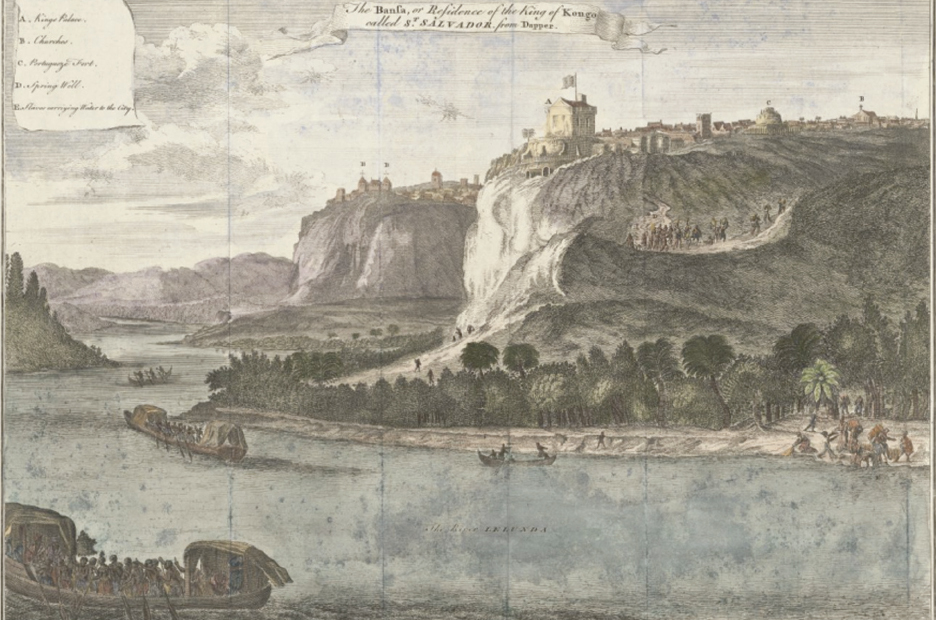America’s History: Printed Page 25
America: A Concise History: Printed Page 26
America’s History: Value Edition: Printed Page 24
Portuguese Expansion
As a young soldier fighting North African Moors with the Crusading Order of Christ, Prince Henry of Portugal (1394–1460) learned of Arab merchants’ rich trade in gold and slaves across the Sahara. Seeking a maritime route to the source of this trade in West Africa, Henry founded a center for oceanic navigation. Henry’s mariners, challenged to find a way through the treacherous waters off the northwest African coast, designed a better-handling vessel, the caravel, rigged with a lateen (triangular) sail that enabled the ship to tack into the wind. This innovation allowed them to sail far into the Atlantic, where they discovered and colonized the Madeira and Azore islands. From there, they sailed in 1435 to sub-Saharan Sierra Leone, where they exchanged salt, wine, and fish for African ivory and gold.

Henry’s efforts were soon joined to those of Italian merchants, who were being forced out of eastern Mediterranean trade routes by the rising power of the Ottoman Empire. Cut off from Asia, Genoese traders sought an Atlantic route to the lucrative markets of the Indian Ocean. They began to work with Portuguese and Castilian mariners and monarchs to finance trading voyages, and the African coast and its offshore islands opened to their efforts. European voyagers discovered the Canaries, the Cape Verde Islands, and São Tomé; all of them became laboratories for the expansion of Mediterranean agriculture.
On these Atlantic islands, planters transformed local ecosystems to experiment with a variety of familiar cash crops: wheat, wine grapes, and woad, a blue dye plant; livestock and honeybees; and, where the climate permitted, sugar. By 1500, Madeira was producing 2,500 metric tons a year, and Madeira sugar was available — in small, expensive quantities — in London, Paris, Rome, and Constantinople. Most of the islands were unpopulated. The Canaries were the exception; it took Castilian adventurers decades to conquer the Guanches who lived there. Once defeated, they were enslaved to labor in the Canaries or on Madeira, where they carved irrigation canals into the island’s steep rock cliffs.
Europeans made no such inroads on the continent of Africa itself. The coastal kingdoms were well defended, and yellow fever, malaria, and dysentery quickly struck down Europeans who spent any time in the interior of West Africa. Instead they maintained small, fortified trading posts on offshore islands or along the coast, usually as guests of the local king.
Portuguese mariners continued to look for an Atlantic route to Asia. In 1488, Bartolomeu Dias rounded the Cape of Good Hope, the southern tip of Africa. Vasco da Gama reached East Africa in 1497 and India in the following year; his ships were mistaken for those of Chinese traders, the last pale-skinned men to arrive by sea. Although da Gama’s inferior goods — tin basins, coarse cloth, honey, and coral beads — were snubbed by the Arab and Indian merchants along India’s Malabar Coast, he managed to acquire a highly profitable cargo of cinnamon and pepper. Da Gama returned to India in 1502 with twenty-one fighting vessels, which outmaneuvered and outgunned the Arab fleets. Soon the Portuguese government set up fortified trading posts for its merchants at key points around the Indian Ocean, in Indonesia, and along the coast of China (Map 1.4). In a transition that sparked the momentous growth of European wealth and power, the Portuguese and then the Dutch replaced the Arabs as the leaders in Asian commerce.

IDENTIFY CAUSES
Question
How did Europe’s desire for an ocean route to Asia shape its contacts with Africa?